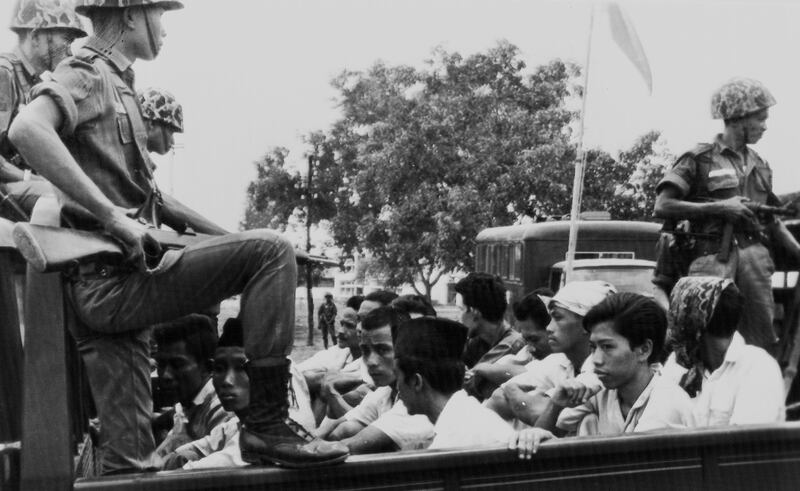Declassified files revealed new details of US government knowledge and support of an Indonesian army's bloody anti-communist purge in the 1960s, describing the mass killings as a "widespread slaughter".
The extermination campaign that killed several hundred thousand civilians during anti-communist hysteria in the mid-1960s resulted the backlash against the Indonesian community part and its leaders following a failed coup.
In 39 recently newly declassified US Embassy documents that cover the period from 1964 to 1968, at the peak of the Cold War, the government was aware of the massacre that some historians claim killed more than half a million Indonesians.
The declassified documents show how American officials across the archipelago knew of the massacres, including the complicity of prominent Muslim civil society groups in the killings.
In one telegram sent from the city of Surabaya on November 26, 1965 the US consul said the number of reports coming in from East Java were an "indication (of) widespread slaughter" adding as many as 15,000 communists may have been murdered in a single massacre.
______________
Read more:
[ US nearly detonated atomic bomb by accident in 1961: file ]
[ 50 Years of Asean: How five ministers from South-East Asia forged the region's most important group ]
[ US releases chapter of September 11 inquiry after 13-year wait ]
______________
General Suharto, who put down the coup, blamed the Indonesian Communist Party and rose to power on the back of the bloodshed, going on to lead the world's most populous Muslim nation with an iron fist for three decades.
During his rule, the massacres were presented as necessary to rid the country of communism -- Indonesia had the world's third-biggest communist party after China and the Soviet Union before the killings.
A month later the same consul said communist prisoners held by the military were being "delivered to civilians for slaughter".
Other victims were "taken out of populous areas before being killed and bodies are buried rather than thrown into river."
A cable the same month from the US consulate in Medan, on the western island of Sumatra, detailed how Muslim preachers described the killings as a religious obligation.
The cable said preachers from Muhammadiyah, one of the country's largest Muslim groups, said communists were the "lowest order of infidel, the shedding of whose blood is comparable to killing chicken".
Human rights activists urged the US and Indonesia to disclose all remaining classified documents on the massacres.
"Those classified documents are crucial to an accurate historical record of the killings and to provide justice for those crimes," Human Rights Watch's Andreas Harsono told AFP.
The release of the new material comes during a current surge in anti-communist hysteria in Indonesia, stoked by Islamic hardliners and some politicians.
Public debate about the killings is still taboo in many quarters.
The government has taken some steps towards reckoning with the past by backing for the first time public discussions into the killings -- attended by survivors and members of the military.
But those moves have also sparked a backlash from the military and police.
Last month an angry mob broke up an event organised by human rights lawyers that they believed was a discussion about communism. Five police officers were injured.






